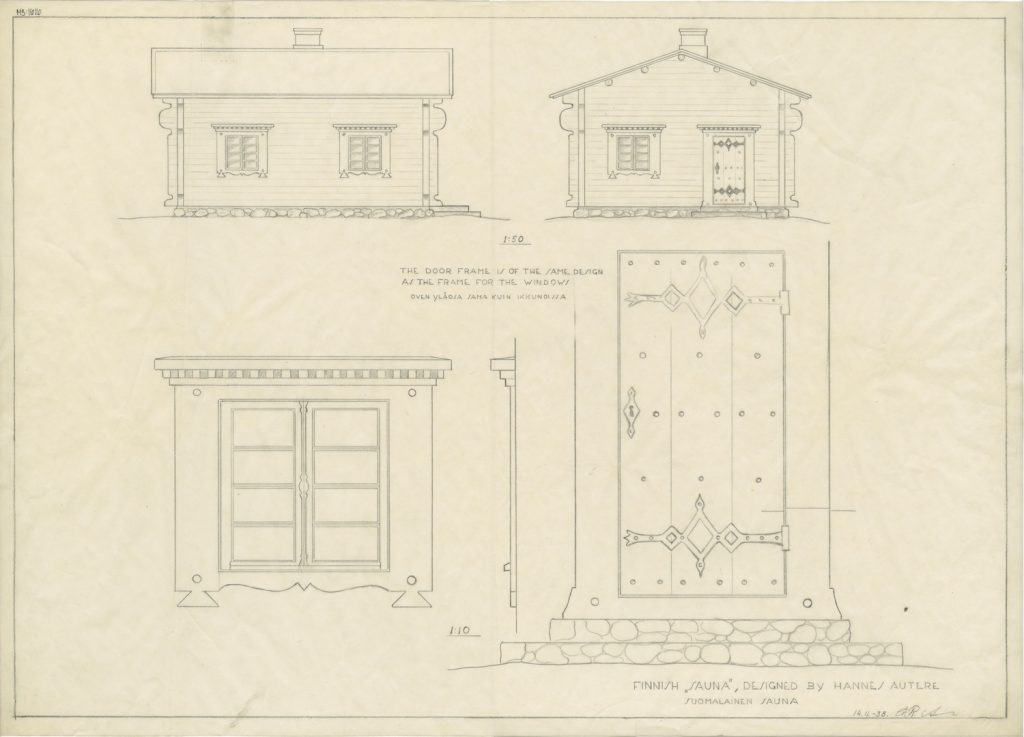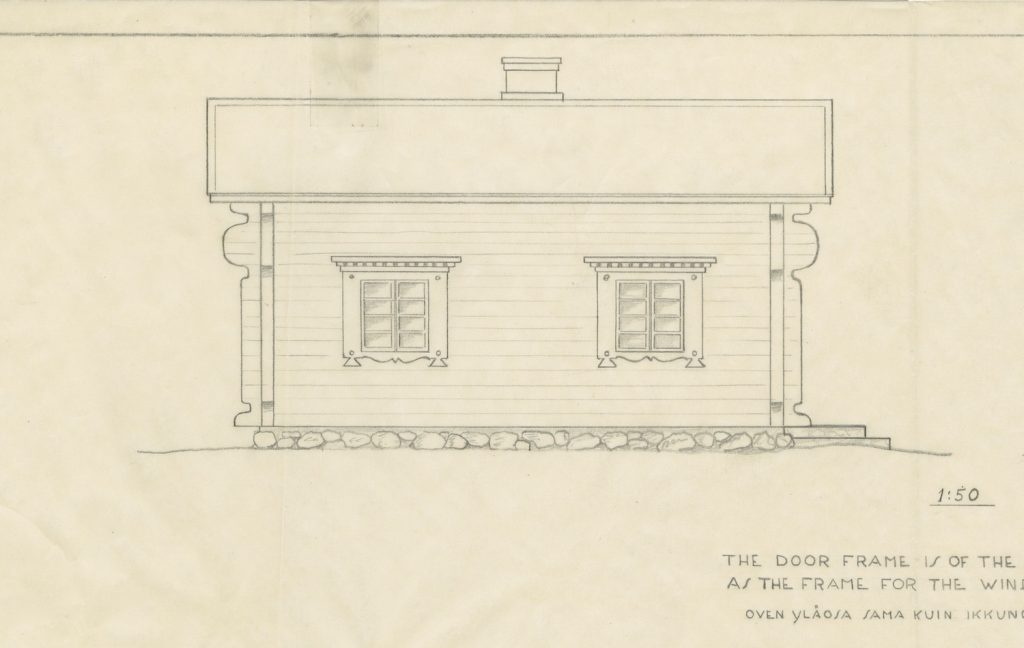A Finnish sauna to England
JULY 2017
In Great Britain, the first Finnish-type sauna was completed in 1939 on the area of Nonington College in England. Gösta Serlachius organised the donation of a sauna for the purpose of introducing Finnish culture to Brits and promoting trade relations. The sauna drawings have been included in the drawing archive of the Serlachius Museums.
Nonington College of Physical Education was an English school opened in July 1938 to educate women as physical education teachers. It has its origins in the English-Scandinavian PE summer schools that had been organised in England since 1923. The founder for the school, Gladys Wright based her ideology of PE teaching on methods of Elli Björksten, a pioneer of Finnish physical education. The institute operated in a Tudor manor milieu in St. Albans Court in Kent.
The idea for building a sauna in St. Albans Court came from men who had enthusiasm for Finland: College’s chair of the board G. W. Treadwell and Finland’s Consul General Henry McGrady Bell. The planning had commenced already early 1938 and the men had hoped that someone in Finland would give a sauna as a gift. Henry Bell and Gösta Serlachius were personally befriended, and Serlachius started to facilitate the acquisition of the sauna in a vigorous manner, characteristic of his nature.
Gösta Serlachius inteded to ensure that the details of the sauna that he would donate would be as Finnish as possible. Consul Bell had some kind of a sauna drawing completed but Serlachius thought it needed improvement in respect of ”presentation and aesthetics”. Artist Hannes Autere who had designed other saunas for Serlachius, received the assignment.
Elli Björksten presented her views on local conditions and customs. People had presented doubts in the discussions, whether the timber supply of the college was adequate. As a result, they considered also a charcoal heating for the sauna. Gösta Serlachius commissioned head engineer Warner Silfversparre to test one Saturday in May – the traditional sauna day – the use of charcoal in two different saunas of Serlachius. The result was that heating a normal sauna heater with charcoal was downright dangerous. In the progress of the plans, a generally favoured view was that an adequate amount of wood could be retrieved from the park area of the college to heat the sauna.
Gösta Serlachius commissioned his head engineer to design as energy-efficient sauna heater as possible, the exterior of which the artist Autere should design ”as Finnish as possible”. In the end, crucial for the sauna heater was, however, its functional qualities, and Serlachius was forced to make a compromise with heater’s traditional features. On the proposal of Silfversparre, a modern sauna heater with both charcoal and wood burner was ordered from Kastor Oy. It included also a heating coil to heat the water. It was surprising that iron balls were used in it instead of heater stones.
The Sauna was supposed to be constructed of redwood and its roofing of smooth tiles which would remind shingles. With the woodwork was entrusted Kolho Oy, which completed the building late 1938. Its parts were then numbered to be able to be reassembled. In January everything was ready for shipment to England. Seth Simelius joined from Kolho to become a sauna builder. Suomen höyrylaivaosakeyhtiö had offered to transport the cargo free of charge. Gösta Serlachius and G. A. Serlachius shared the other costs almost equally. Gösta Serlachius had negotiated discounts on the price with the deliverers the best he could on the grounds that a sauna built in England would give them good publicity.
Beside a steam room, the sauna had also a wash space and a dressing room with footstools and wash spots drawn for four persons. In addition, it had a foyer through which the heater was heated. The washroom was equipped with warm and cold water of which oblation was mixed in wooden vessels. In the dressing room there was a fireplace made of bricks. Gösta Serlachius, who has a solid opinion on aesthetics of traditional Finnish building, had donated an old lock to be used on the door of the sauna. The hinges had been forged by smith Atle Luotonen, whose works have been used also on many doors in Joenniemi Manor. Hangers and wooden vessels came from Kolho and also Finnish curtains were naturally hung over the windows of building. The appearance and decoration represented the same decorative style imitating the peasant construction that Hanne Autere had designed for many buildings on the commission of Gösta Serlachius.
Opening ceremonies were celebrated in a sunny weather on 27 May 1939. The donor of the sauna, Gösta Serlachius, did not participate in the event, probably due to his poor health. The ceremonies were conducted by Finland’s Consul General, Minister G. A. Gripenberg, who opened the sauna door with a key decorated with a blue, red and white ribbon. The flags of Finland and United Kingdom were raised in the flagpoles in front of the sauna. Invited guests from the area, students of the college dressed in blue uniforms, and a group of Finnish young women residing in England dressed in traditional folk costumes were present. The flags of the two countries flew in the different scenes of the festive event. The programme consisted of speeches, a sports performance, national anthems, Finnish folk dances and a tea service in the English style.
When the sauna was planned, Gösta Serlachius stated that if it was built of good pine wood, the building could stand for decades. Indeed, it is standing today altered as a guest house and moved to another site, but still within the same Nonington village.
Milla Sinivuori-Hakanen
Curator



